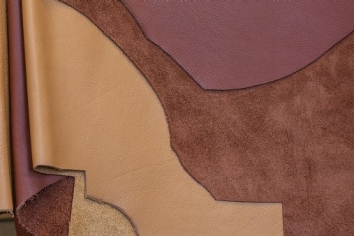 Cod liver oil and willow bark extract used in the tanning of skins for clothing and other products offer notable differences in treatment, a study by a team of scientists shows. Their findings show the promise of a technique that may be used to identify the aging behavior of materials and to examine delicate works of art.iStock/CreativeNature_nl via New York UniversityThe research, which appears in the journal Analytical Chemistry, relies on a method employing nuclear magnetic resonance spectroscopy, or NMR spectroscopy, which reveals the physical and chemical properties of atoms in a given substance, as well as the more commonly known magnetic resonance imaging (MRI).
Cod liver oil and willow bark extract used in the tanning of skins for clothing and other products offer notable differences in treatment, a study by a team of scientists shows. Their findings show the promise of a technique that may be used to identify the aging behavior of materials and to examine delicate works of art.iStock/CreativeNature_nl via New York UniversityThe research, which appears in the journal Analytical Chemistry, relies on a method employing nuclear magnetic resonance spectroscopy, or NMR spectroscopy, which reveals the physical and chemical properties of atoms in a given substance, as well as the more commonly known magnetic resonance imaging (MRI).
“Because this is a non-invasive method, it can be used to examine and evaluate the most fragile of materials without damaging them,” explains Alexej Jerschow, a professor in New York University’s Department of Chemistry and one of the study’s co-authors.
“As well as offering insight into the material qualities and the preservation state of an artifact, the results provide a more complete picture of the variation of properties across the samples and give critical insight into the mechanisms of the material deterioration,” adds co-author Torunn Klokkernes, head of Collection Management at the University of Oslo’s Museum of Cultural History.
“Historically, the treatment of skin-based clothing has varied among different cultures,” explains co-author Eleonora Del Federico, professor of chemistry at the Pratt Institute. “Therefore, the NMR technique, in principle, could aid researchers in determining a specific tanning technique, but also provide insight into the provenance of a particular artifact.”
The team employed NMR spectroscopy and MRI to evaluate two skin-tanning methods on samples of various ages: one using cod liver oil and the other employing a willow bark extract commonly used in tanning. These two methods were compared with an untreated skin.
They found that skin samples treated using the two tanning methods could be differentiated by their relaxation properties—similar to the way healthy tissue is distinguished from diseased tissue in clinical MRI scans. Changes in the chemistry of the skin samples could also be detected, giving insight into the changes brought about by the tanning processes. All of this information could be acquired without damaging the samples, making it a promising approach for the study of other, historically important artifacts.
The study’s other authors included Cindie Kehlet, an assistant professor chemistry at the Pratt Institute, as well as NYU graduate student Lizheng Zhu and postdoctoral fellow Andrew Ilott.
The study was supported, in part, by funding from the National Science Foundation (1412064) as well as the Alfred P. Sloan Foundation and the Henry and Camille Dreyfus Foundation.
The research, which appears in the journal Analytical Chemistry, relies on a method employing nuclear magnetic resonance spectroscopy, or NMR spectroscopy, which reveals the physical and chemical properties of atoms in a given substance, as well as the more commonly known magnetic resonance imaging (MRI).
“Because this is a non-invasive method, it can be used to examine and evaluate the most fragile of materials without damaging them,” explains Alexej Jerschow, a professor in New York University’s Department of Chemistry and one of the study’s co-authors.
To continue reading this article, sign up for FREE to

Membership is FREE and provides you with instant access to eNewsletters, digital publications, article archives, and more.












